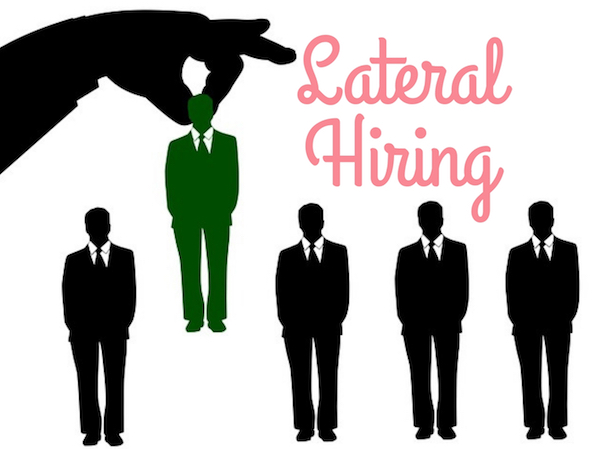In this era of stiff demand and supply, talented and skilled professionals cannot be literally conjured out of thin air, given the intensity and enormity of demand for such employees. These are much sought-after people, who possess the desired profile, which even your competitors are looking for!
The prospective candidates that are lateral hires possess interpersonal and additional skills that will prove to be an asset for your company. Lateral hiring is a perceptive hiring process which brings in experienced and skilled talent that will profit the company in the long run. It is a challenging process for the recruiter as candidates consider the employee benefits and pay scale with future pay prospects in mind when they join a new company.
Lateral hiring increases the efficacy of the company
As per a survey, the most effective proposition to retain or hire a top talent is a performance bonus! A strong and convincing proposal to counter competitive offers is advisable in a successful lateral hiring proposition. Hiring top talent that is coveted by your competitors requires a proposition that highlights the branding of your company, and a strong offer that benefits the recruit for the next three years in terms of appraisals, roles and recognition.
Challenges in lateral hiring
Lateral hiring adds to the skillset and the level of expertise in a field that will prove more valuable for your company in a positive way. There are several challenges in lateral hiring as the candidates are familiar with work environments, appraisal scale, adaptability, attrition and vitality in value addition. Hence, they will always expect more from a forthcoming offer. Some of the common challenges that will prove to be a deal-breaker for the employee to accept your company’s offer are:
• An unclear job description that doesn’t specify employee benefits in your company; or a job role similar to their current employment, and doesn’t seem to add any value to their existing profile.
• An aggressive approach about your benefits, proposal and post-joining support will put off the candidate.
• Getting to work in the same role as the current organisation can be a disappointment for the seasoned and well-experienced candidate. So, if you are looking to hire an experienced professional, create a role that emphasises their experience and skill set, so that it creates that value for them to consider.
• Improper communication on the roles and responsibilities during the interview process are a major put off. Also, if the employee senses respect lesser than the level expected for his kind of experience, he will have double thoughts.
• Availability of your job postings! Since new job requirements are posted 24 hours a day, the employee should find your offerings tempting enough to give it a shot! As industrial experts are higher in demand, a qualified top talent must be approached with respect and with clear demands.
• An incomplete hiring process, where an experienced professional isn’t offered the expected hike! Costs and benefits speak volumes! If the cost of hiring is expected to be at a minimum when hiring a qualified candidate, the negotiation must be handled with care. When the talent is likely to positively affect the quality of your organisation, there should be no hesitation in meeting their reasonable demands.
Handling lateral hiring challenges
Lateral hires often have shortcomings, but then the industry is full of opportunities for them to evolve as the most coveted- talent. They lay the offers on the table and finalise their decisions based on how they are valued and vouched upon in the places they are offered. Also, the character and work history matters when they are being offered a good elevation from their current position! If they are truly talented and capable, they are probably missing the opportunity for internal growth in their present organisation. Hence, your offer should be reasonable and based on your research on the candidate. Always analyse the characterisation from internal and external resources from their current companies. At least a little homework about the candidate is necessary, as this character analysis will enable a fruitful onboarding for your company!
These are some of the ways to handle bottlenecks in hiring lateral talent:
• Connect the prospective candidates to their expectations in terms of roles and requirements. Give them challenging roles or create some to convince them that they are going to get a lot more than just benefits of joining your company.
• Provide them an irresistible deal that offers an edge over your competitors. Money is not a main motivator for experienced people with special and additional skillsets, but it should not be a de-motivator either.
• Highlight the culture, work environment and perks to make them more familiar and comfortable with your company. Make them feel good about the prospect of becoming a valued employee in such a workspace and to tone their future career in your company.
• Accentuate the employee attributes in your company. Let them understand how much creativeness is encouraged.
Despite shortcomings, such as higher attrition rates, work environment changeability and continued industrial demand, lateral hires should be motivated with the right compensation and benefits. It is recommended to help them adapt to the new change in work culture and the environment with an appointed HR partner. Being a pillar of support is mandatory to retain such talent and grow your company’s skilled workforce.



